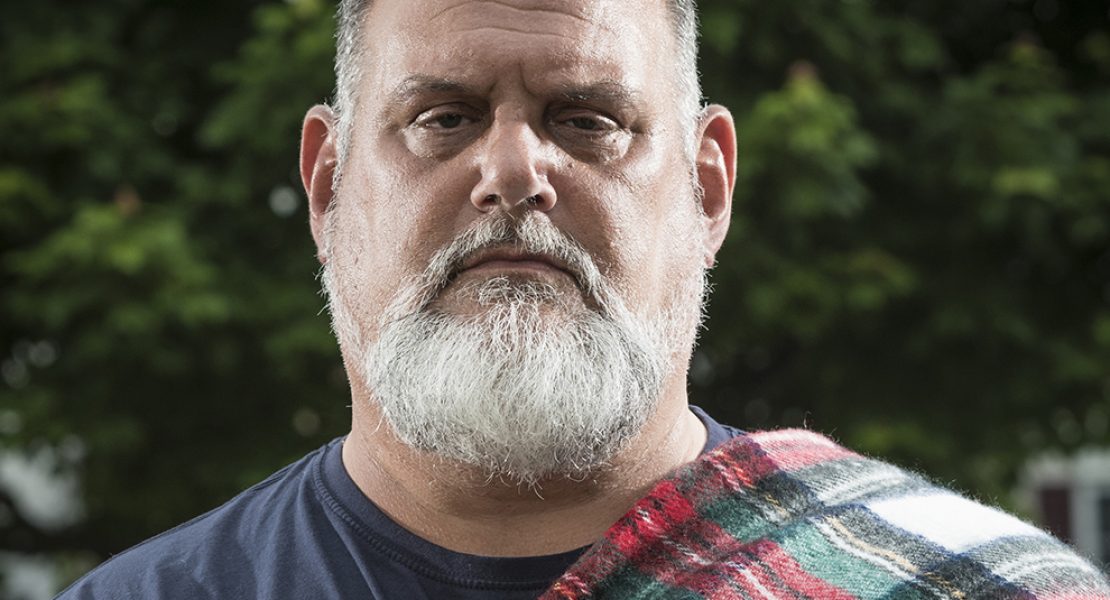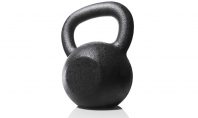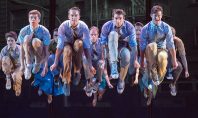Finding His Strength Again

In his prime, Paul Ferency of Forks Township was a 6’5”, 350-pound wall of muscle—and he knew how to use it.
“I was among the top 5% of people on earth when it comes to strength,” he says. This might seem like an exaggeration, until you learn that Paul competed in 54 world championship matches to determine the world’s strongest man, played in Scotland’s Highland Games (participating in events like the caber toss and hammer throw) for 25 years, and spent six months traveling with Joan Jett and her entourage as her personal bodyguard. More recently, he served as the Strength and Conditioning coach for Lafayette College.
But then, a series of unexpected medical issues sapped nearly all his strength. One day he walked into St. Luke’s University Health Network’s Anderson Campus with flu-like symptoms, but was quickly diagnosed with a urinary tract infection (UTI) so severe that his kidneys began shutting down. As toxins leached into his bloodstream, his condition turned to sepsis, a dreaded, potentially life-threatening complication of uncontrolled infections.
“Although he had been relatively healthy before, the combination of sepsis and severe kidney injury left him with profound muscle weakness,” says Geeta G. Sathe, M.D., a physical medicine and rehabilitation specialist at St. Luke’s who was Paul’s attending physician for his two-week stay in the ICU and subsequent stay in the main hospital. “Paul’s chronic gout flared up at that time, too, resulting in great pain in his knees and ankles.”
In his own words: “I was so immobile and getting progressively worse,” says Paul. “I couldn’t move at all.” Fortunately, that’s one of the many situations in which a branch of medicine called physiatry (also known as physical medicine and rehabilitation, or PM&R) can lead to remarkable improvements. Broadly put, physiatry works to enhance, improve, restore, and maximize functional abilities for individuals with impairments that affect the brain, spinal cord, nerves, muscles, ligaments, tendons, and bones.
“Physiatrists help to diagnose and treat those conditions by using tools such as imaging, medication, injections, assistive technology, or personalized exercise plans,” says Dr. Sathe.
They also explore the level of rehab needed: Inpatient? Skilled nursing facility? Home therapy? Outpatient? The answer will differ for every patient, and can shift during the recovery process. “Because rehab is an ongoing process, we can help long-term patients transition from one service level to another,” she explains.
And while many medical practices concentrate on a single body part – kidneys, for example, or the heart – physiatrists take a more holistic approach. They will collaborate, as needed, with other physicians, physical and occupational therapists, speech and language pathologists, social workers, prosthetists, and other service providers.
But physiatry goes beyond the physical self. “We engage the patient’s personal support system, social situation, and so on. Education is a huge part of the job, too. We describe the challenges of the process, expectations and goals, a projected timeline, even the possibility that a deficit may remain—and how to deal with that fact,” she says.
In Paul’s case, he entered the Acute Rehabilitation Center (ARC) at St. Luke’s University Hospital Bethlehem for two weeks of intensive inpatient physical and occupational therapy. And while some patients may find the challenges of rehab to be daunting, Paul was a big proponent of the program. “Because of his background in sports and fitness, he knew how and why the process works,” says Dr. Sathe. “And he had a great attitude—he’d even cheer on the other patients!”
“I was among the top 5% of people on earth when it comes to strength.”
“When I got to rehab, I was pretty immobile,” Paul recalled. “But they got me moving twice a day, every day, for about an hour each time. We worked on regaining my balance, walking, and strength-building exercises like the stationary bike. I enjoy working out, and when they put the challenges in front of me, I just ate that up.”
Paul also benefitted from occupational therapy, which essentially helps you do the “jobs” of everyday life. Activities that most of us take for granted, such as grooming, eating, even using the toilet, may have to be relearned as step-by-step processes. Or they may have to be accomplished in different ways, accommodating a patient’s ability level.
Overall, his experience with St. Luke’s was quite positive. “The staff was really compassionate,” he says. “When I got to ARC, they took one look at me and realized that a standard-sized patient bed wasn’t going to fit me, and they managed to find one that would in just a few minutes.”
Since his initial discharge, Paul has experienced several setbacks—a coronary ablation, diagnosis of prostate cancer and another UTI—but he’s powered past those obstacles like a true champion.
He continues to work out at home—after 45 years of training, he has plenty of gear—and plans to return to some serious weightlifting when he’s able. “I don’t need to be the strongest man in the world anymore,” he says. “I just want to get back to where I can do things easily.”
And with that kind of attitude, along with the skills he’s learned, he’s sure to succeed.
Do you need a physiatrist?
At St. Luke’s, physiatry has historically been available as an inpatient in the Acute Rehabilition Center (ARC). Now a comprehensive program is available on an outpatient basis for patients who require longer-term rehabilition needs. Although there are many conditions that can benefit from physiatry, here are some of the more common ones:
• Amputations
• Multiple sclerosis
• Brain injuries
• Burns
• Parkinson’s disease
• Sprains
• Strokes
• Arthritis
• Sports injuries
For more information, visit SLUHN.ORG/AR




















